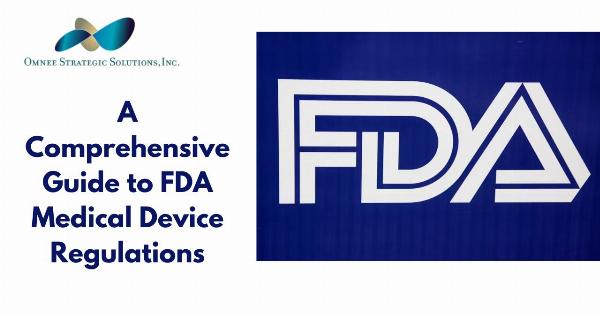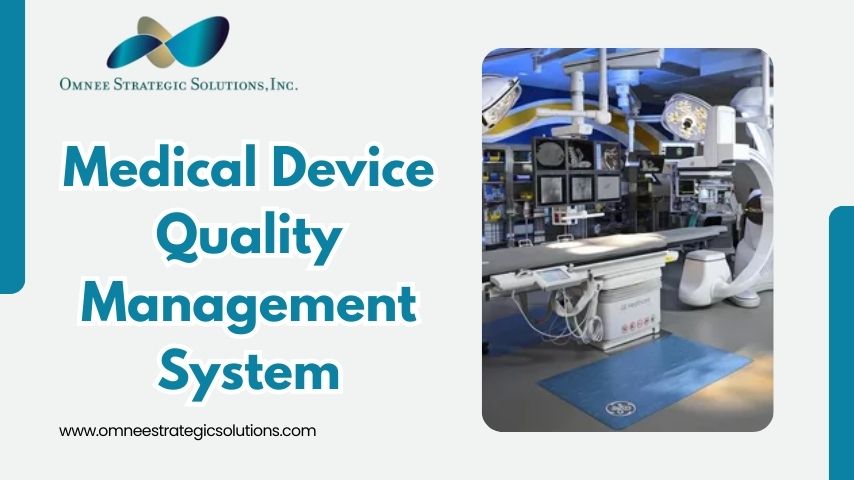Understanding the FDA Regulations For Medical Devices

When it comes to medical devices, safety is a top priority. The FDA (Food and Drug Administration) plays a crucial role in ensuring that these devices are safe and effective for use. Understanding the FDA regulations for medical devices is essential for manufacturers, healthcare providers, and even patients who rely on these devices for their well-being.
What Are FDA Regulations?
FDA regulations for medical devices are a set of rules and guidelines that manufacturers must follow to ensure their products are safe for public use. These regulations cover everything from the design and manufacturing process to the labeling and marketing of the devices. The goal is to protect the public from potential risks associated with medical devices while also ensuring that these devices work as intended.
Why Are FDA Regulations Important?
The importance of FDA regulations for medical devices cannot be overstated. These regulations ensure that all medical devices on the market have been thoroughly tested and evaluated for safety and effectiveness. Without these regulations, there would be no standard to measure the quality of medical devices, putting patients at risk. Compliance with FDA regulations is not just a legal requirement; it is also a responsibility that manufacturers must take seriously.
The Classification of Medical Devices
To better understand FDA regulations for medical devices, it’s essential to know that the FDA classifies medical devices into three categories based on the level of risk they pose to the user.
Class I: These are low-risk devices such as bandages and handheld surgical instruments. They are subject to the least regulatory control.
Class II: These devices are of moderate risk, such as powered wheelchairs and some diagnostic tests. They require more regulatory controls to ensure safety and effectiveness.
Class III: These are high-risk devices like pacemakers and heart valves. They require the highest level of regulatory control and must undergo rigorous testing and approval processes.
The Premarket Approval Process
One of the key aspects of FDA regulations for medical devices is the premarket approval process. For Class III devices, manufacturers must submit a Premarket Approval (PMA) application to the FDA. This application includes data from clinical trials that demonstrate the device's safety and effectiveness. The FDA thoroughly reviews this data before granting approval. This process ensures that high-risk devices are safe for patients before they are made available to the public.
510(k) Clearance
For many Class I and Class II devices, the FDA requires a 510(k) clearance instead of a full PMA. This process is generally faster and less stringent. To obtain a 510(k) clearance, manufacturers must demonstrate that their device is substantially equivalent to a device that is already legally marketed. This process allows for quicker access to the market while still maintaining safety standards.
Post-Market Surveillance
Even after a medical device is approved and available on the market, FDA regulations continue to play a role. Post-market surveillance involves monitoring the safety and effectiveness of a device after it has been released to the public. This is crucial because it allows the FDA to identify and address any issues that may arise once the device is in widespread use. Manufacturers are required to report any adverse events or malfunctions to the FDA, ensuring ongoing protection for patients.
The Role of Quality Systems Regulations (QSR)
Another important aspect of FDA regulations for medical devices is the Quality Systems Regulations (QSR). These regulations require manufacturers to establish and maintain a quality management system that covers all aspects of the design, production, and distribution of medical devices. The QSR ensures that manufacturers consistently produce devices that meet the required standards and perform as intended. Compliance with the QSR is crucial for both the safety of the devices and the success of the manufacturer.
The Importance of Labeling and Marketing Compliance
Labeling and marketing are also subject to FDA regulations for medical devices. Manufacturers must ensure that their products are labeled accurately, providing clear information about the device's intended use, potential risks, and any necessary warnings. Misleading or false labeling can lead to serious consequences, including regulatory action by the FDA. Marketing claims must also be backed by scientific evidence to ensure that consumers are not misled.
Challenges in FDA Compliance
While FDA regulations for medical devices are essential for public safety, compliance can be challenging for manufacturers. The regulatory process can be time-consuming and costly, especially for Class III devices that require extensive clinical testing. Additionally, staying up to date with changing regulations and ensuring ongoing compliance can be a complex task. However, the benefits of complying with FDA regulations far outweigh the challenges, as it not only ensures patient safety but also builds trust in the brand.
Conclusion
Understanding FDA regulations for medical devices is crucial for anyone involved in the medical device industry. These regulations are in place to protect the public by ensuring that all devices are safe and effective. Whether you are a manufacturer, healthcare provider, or a patient, knowing these regulations can help you make informed decisions and contribute to the overall safety of medical devices.
By following FDA regulations for medical devices, manufacturers can bring safe and effective products to market, healthcare providers can trust the devices they use, and patients can rely on the devices that are crucial to their health and well-being.
Note: IndiBlogHub features both user-submitted and editorial content. We do not verify third-party contributions. Read our Disclaimer and Privacy Policyfor details.







